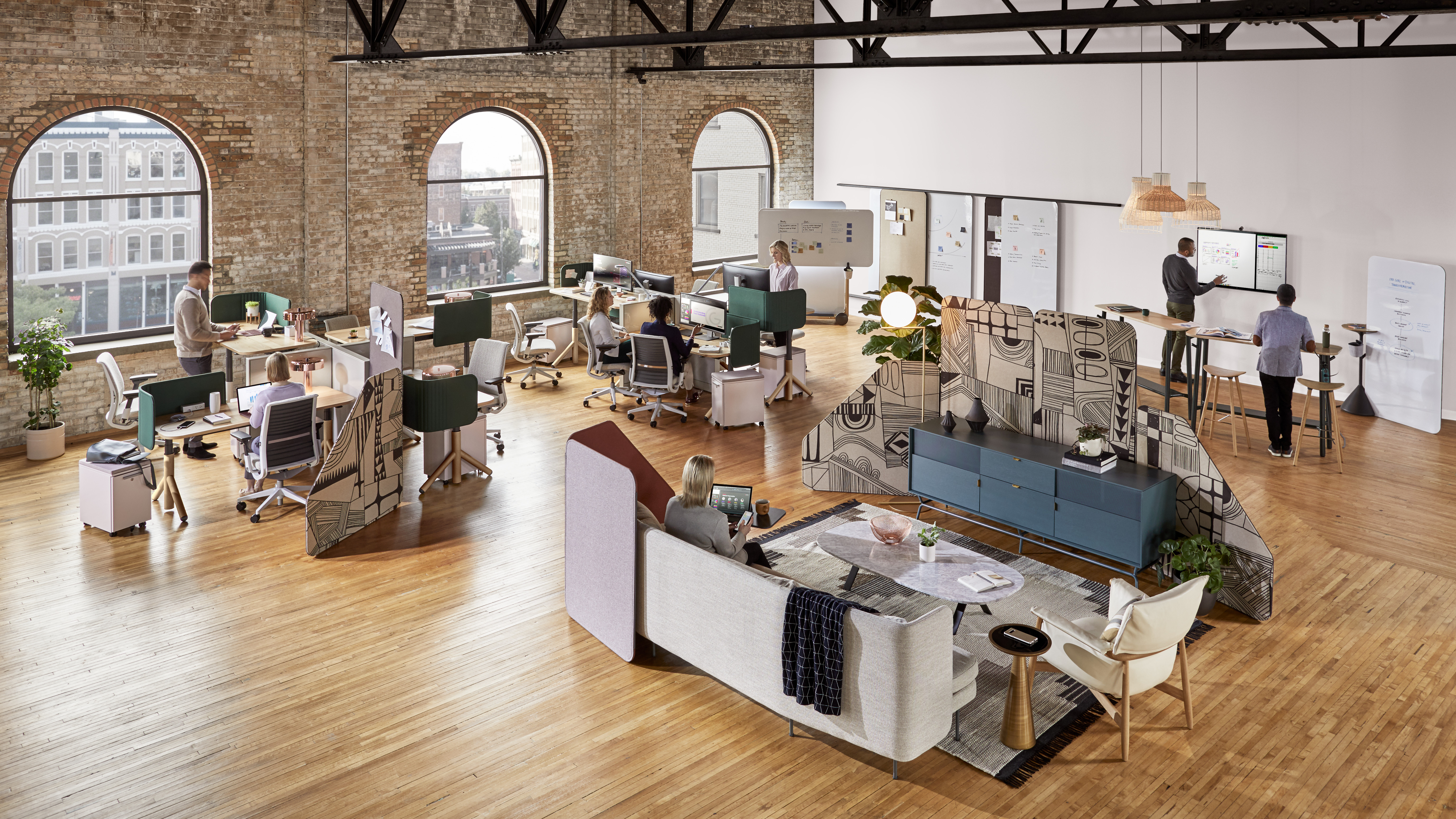
What is work? Historically, it has been all about processes. Companies have risen and fallen that built products and provided services. Process-driven factory workers have churned out automobiles and office furniture. Process-driven service providers have provided audit and IT services. Everything we have done in the past has been about completing tasks to meet a customer need. But now, things are shifting. The rise of artificial intelligence has taken the need for human workers in completion of process-driven tasks. Assembly lines have become automated. AI chat bots provide customer support for telecoms and IT providers. There is no human input required. So, what does that mean for the future?
The Future of Work is Creative
With the declining volume of process-driven work that employers are experiencing, they need to look towards the future. That future is a shift towards creative work. Employees will spend less time engaging in process-driven tasks, and more time on generative, innovative work that propels the organization forward. This type of work has always been present – developing new products, implementing new business lines, and designing new processes to improve efficiencies – but in the extremely near future, it will be most of the work that humans are doing. As robots and artificial intelligences begin to absorb more and more of the day-to-day tasks that we currently do, we need to make the jump towards a new type of working.
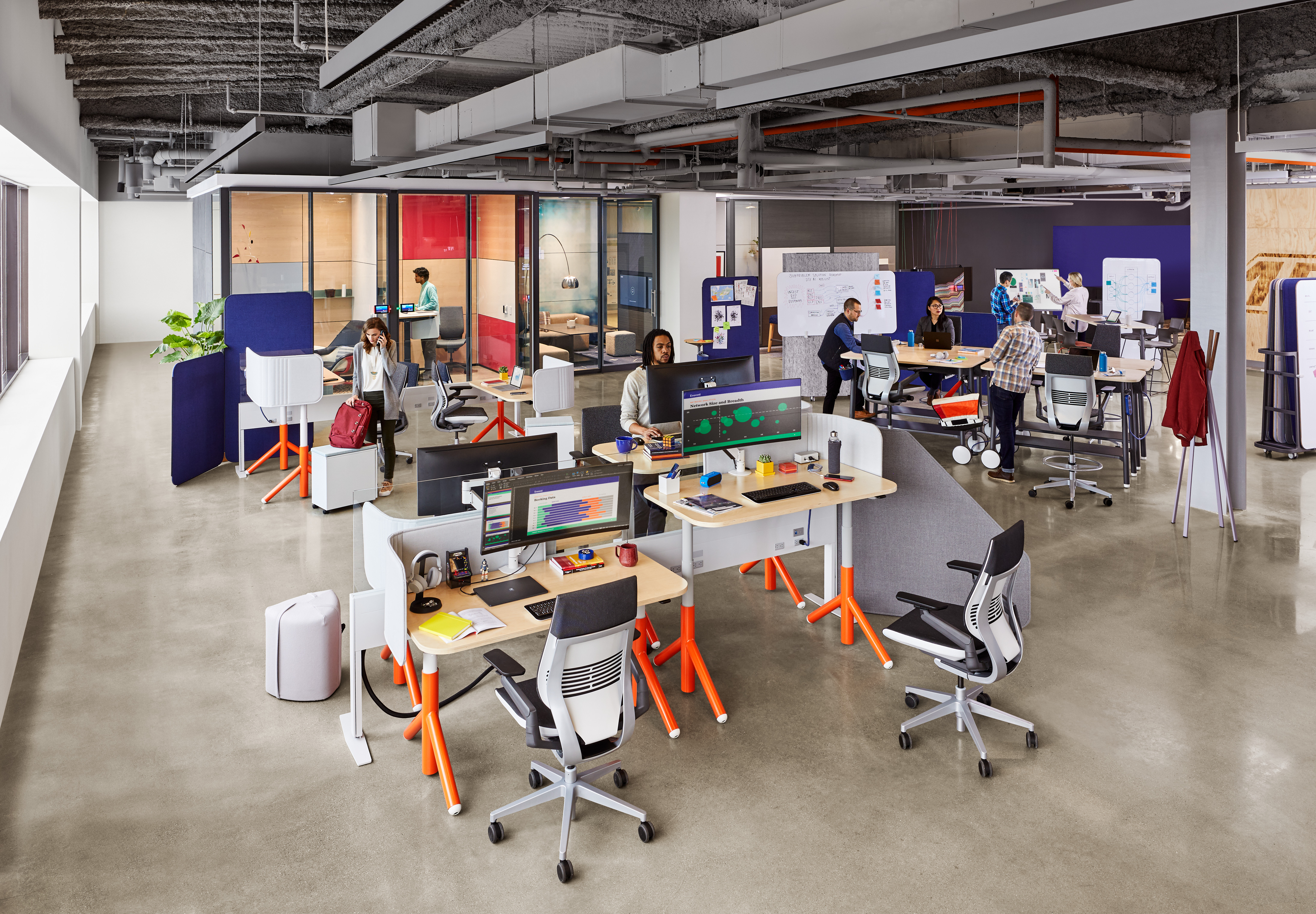
An Era of Hyper-Collaboration
The creative, generative, and innovative work that will become the core of all employees day-to-day requires a new way of working. Hyper-collaboration will become the name of the game. Teams will not just come together for a weekly meeting to discuss progress on current tasks. They will become collaborative teams that constantly go between individual and team work as they move towards their next project’s goal. These hyper-collaborative teams are today’s modern tribes – a close knit unit with a shared mission, charged with tackling complex problems. You can read more about these modern tribes in Steelcase’s 360 Magazine. To support this new requirement for hyper-collaboration, we need to implement both physical systems and new processes that enable innovation.
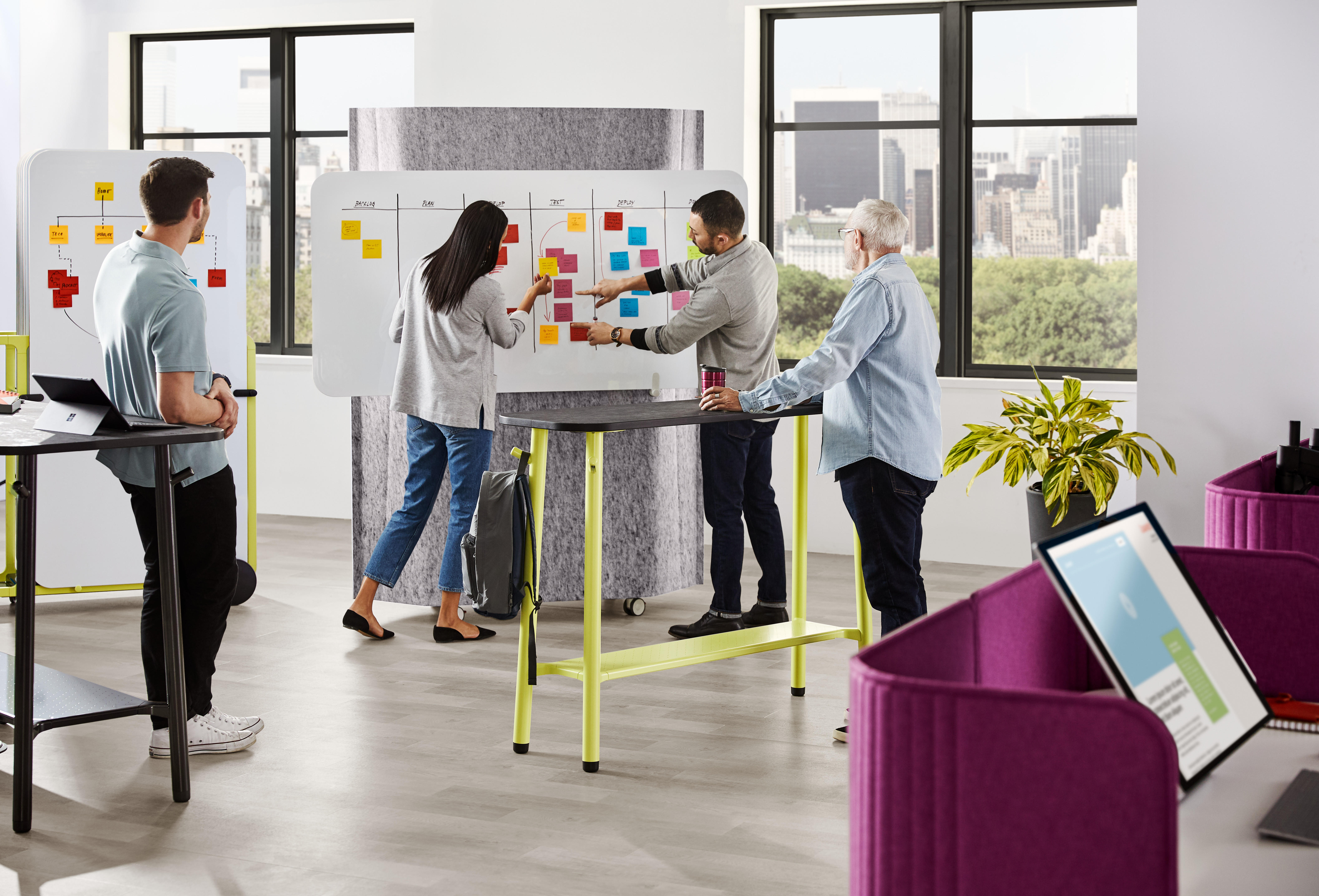
A New Kind of Work
There are two big methodologies that are dominating the conversation in leading companies as they engage in this creative shift – Design Thinking and Agile.
Design Thinking
Design Thinking is a system for creative problem solving. Teams have workshops and brainstorm. They fill posters and whiteboards with content and come together to share ideas. As they move forward with an action plan, they stay together so they can refine and improve their ideas. They sometimes need to retreat from the group and focus while they process their own ideas or absorb information, but they reconvene to share information as they work towards the goal. Design thinking is dynamic and fast-paced.
Agile
Agile applies a process-driven ideology to innovative work. Agile originated in software development, but has moved into other industries to improve speed, flexibility, and customer focus. The purpose of agile is simple – take a complex goal, break down all the steps needed to reach that goal, and then complete those tasks in order until the goal is achieved. Agile work is a sequence of activities that the team can execute quickly, monitor their progress, and re-adjust the workflow. Through the course of an agile sprint, teams engage in daily stand-ups, small group work, reviews, and retrospectives. Team members constantly shift between modes of work from individual to collaborative as their daily task demands.
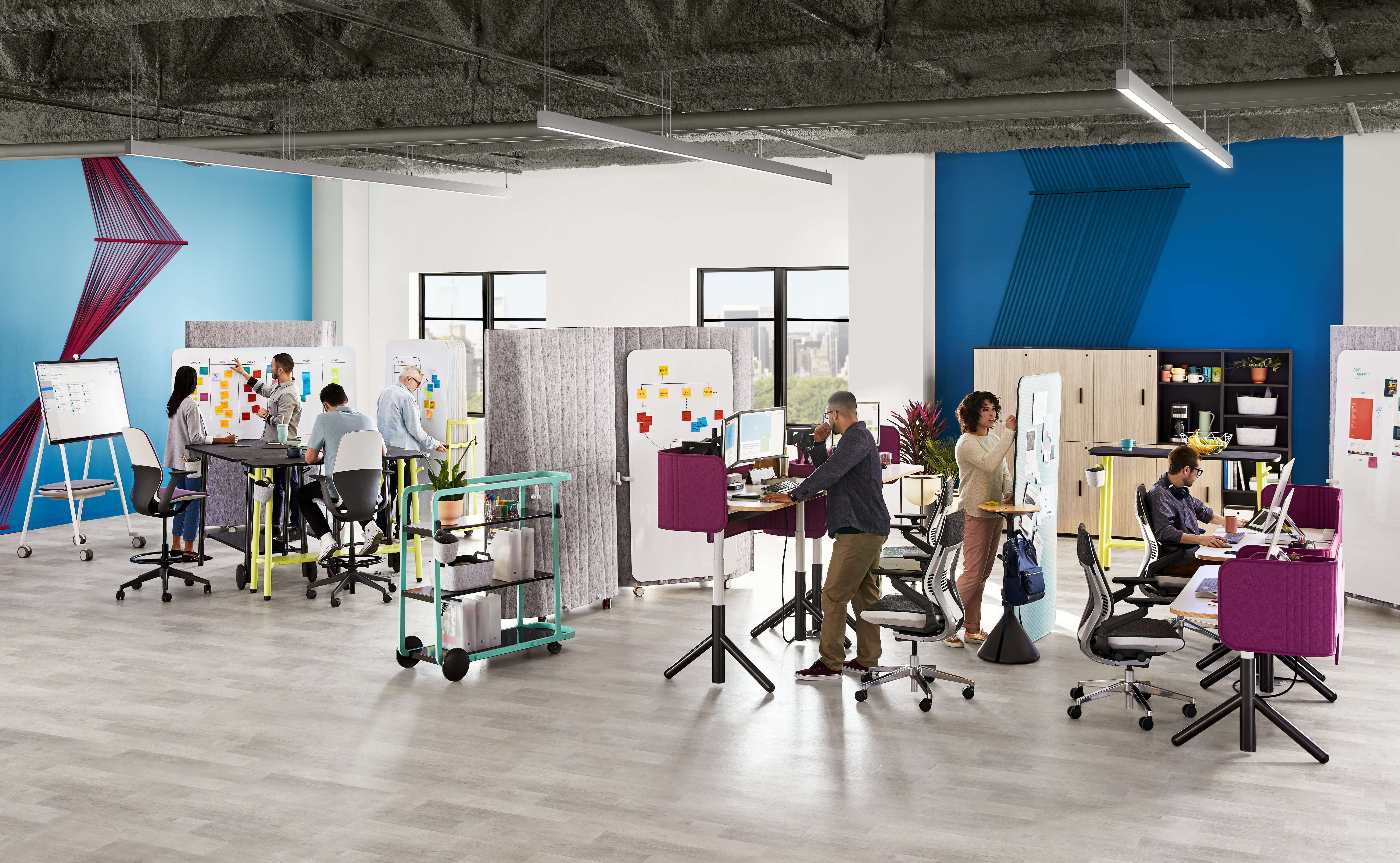
To meet the demands of agile and design thinking, we are re-thinking the way we design office spaces to accommodate the need for changing work modes. Teams need to be able to converge and diverge as necessary to succeed in creative, generative work. It is important for us to identify what these changing needs are so that we can respond effectively.
How Agile Teams Struggle
There are countless different ways that teams struggle to make traditional office spaces work for agile and design thinking work styles, but there are some key areas in which teams struggle that need to be addressed.
New Work. Old Office.
Offices designed for linear work are not successful in enabling agile or design thinking workflows, activities, and behaviors. In traditional offices, teams are siloed in cubicles and offices away from each other. Conference rooms are destinations, and they are sometimes located in separate locations from the team members. Difficult reservation systems and limited conference space limit the speed at which team meetings can be pulled together, and traditional conference rooms do not support the type of work that agile teams need to do.
No Place to Call Home
Teams need to work closely with easy access to information, but do not have a “home” to do this. There are no nearby collaborative spaces that the team can own. Team goals and objectives are formed in meetings, but teams often lose sight of them due to lack of real estate to post and shared ideas on the project. There is a lack of manual and digital venues to share and display information within the team’s home base, such as white boards or digital media displays.
Lack of Control
Team members feel a lack of control over their environment and struggle to balance their individual work with the demands of the team’s work. Spaces are fixed and cannot adapt quickly or easily to changing activities throughout the day. When the team needs to shift quickly from individual focus work into a team huddle, they are limited by their space, meeting in small hallways between cubicles or crowding into one office.
Ideas Get Stuck
Collaborative spaces are designed for information sharing and not problem solving. Teams come together to conduct generative work. Ideas are shared, but then nothing happens with them. The lack of fixed signage and displays in physical and digital media means ideas float off into the ether or get stuck in a note pad. Without proper tools to keep information front of mind, teams lose the ability to effectively move ideas forward.
Tools Fall Short
There is little access to technology for group work. When large-scale collaborative technology is available, such as monitors or televisions, the spaces they occupy are designed for information sharing. They limit the ability of the team to use the technology for collaborative work. Access is typically limited to one person with a mouse and keyboard to control the display, and multiple members cannot quickly share their content or contribute in a meaningful way.
All these limitations prevent teams that use agile and design thinking methodologies from performing effectively. Their offices are designed for density, not innovation. Their spaces are designed for the individual or the team, but their new work requires new rules. Spaces need to be designed for the individual and the team. It is time to reboot the office.
Reboot the Office
Just like a computer, our offices need occasional reboots to make them work correctly. As designers start thinking about teams and individuals together, the spaces they create need to change. To alleviate the struggles that agile teams experience in the old office, it is time to redesign. What can organizations do? Create a space where teams can:
Create a home where they can surround themselves in their project and display their thinking and ideas.
Whiteboards, tack boards, and large digital displays should surround and fill the space. Teams should be able to look up and see the ideas and objectives they are working on quickly. These teams need immediate access to media that they can use to efficiently communicate ideas to other team members and work on problems together.
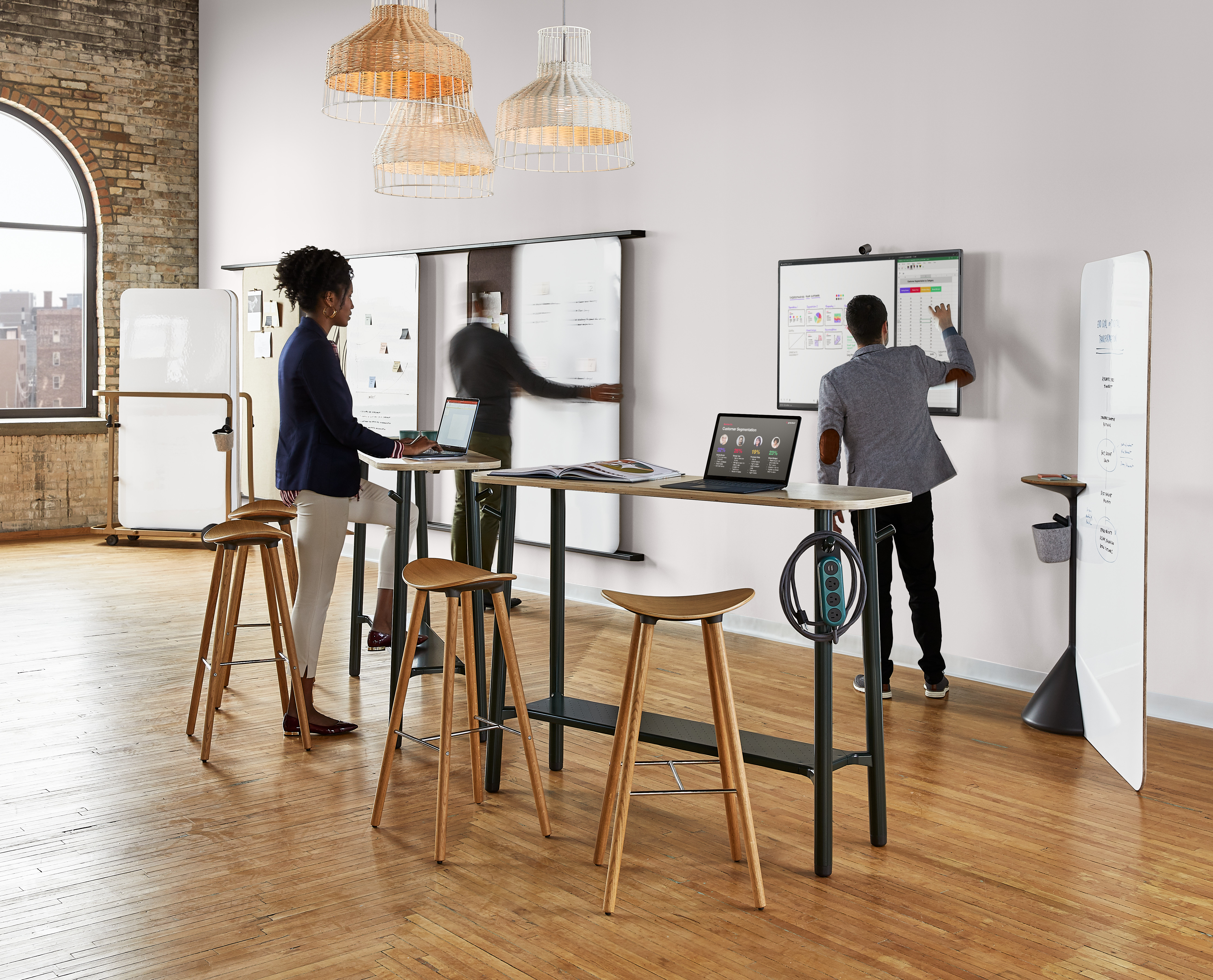
Quickly switch between team collaboration and individual focus work.
Current spaces are designed for employees to do team work or individual work. New spaces need to allow team members to quickly shift between the two without missing a beat. Modular, flexible spaces can accommodate the shifting needs of agile teams.
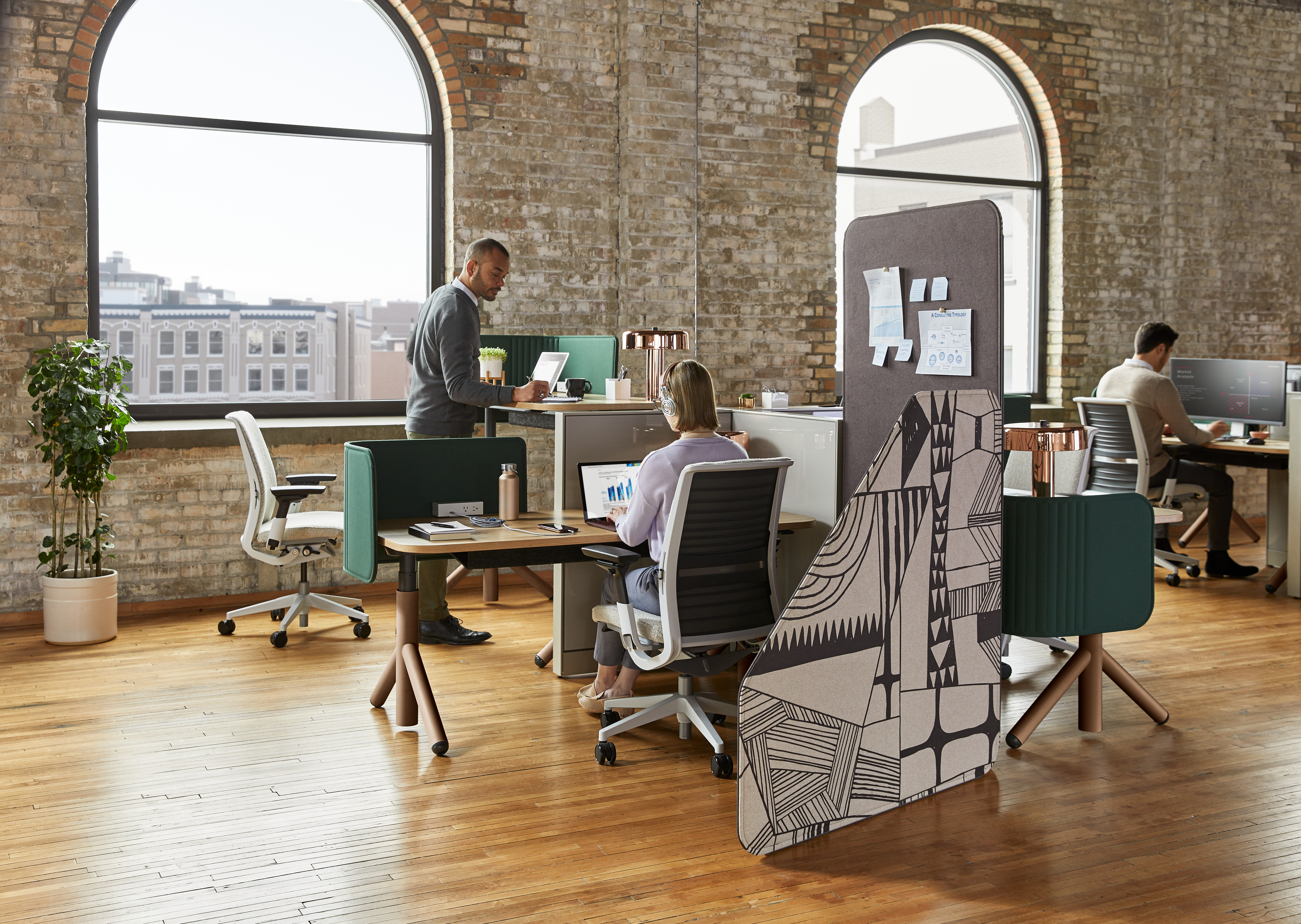
Reconfigure the space on their own as work flows and changes throughout the project.
Team needs change as different tasks prevent themselves through the course of a project. Focus time, huddles, and large information-sharing sessions all need to be able to occur in the same space. Agile teams need spaces that are adaptable as their work changes.
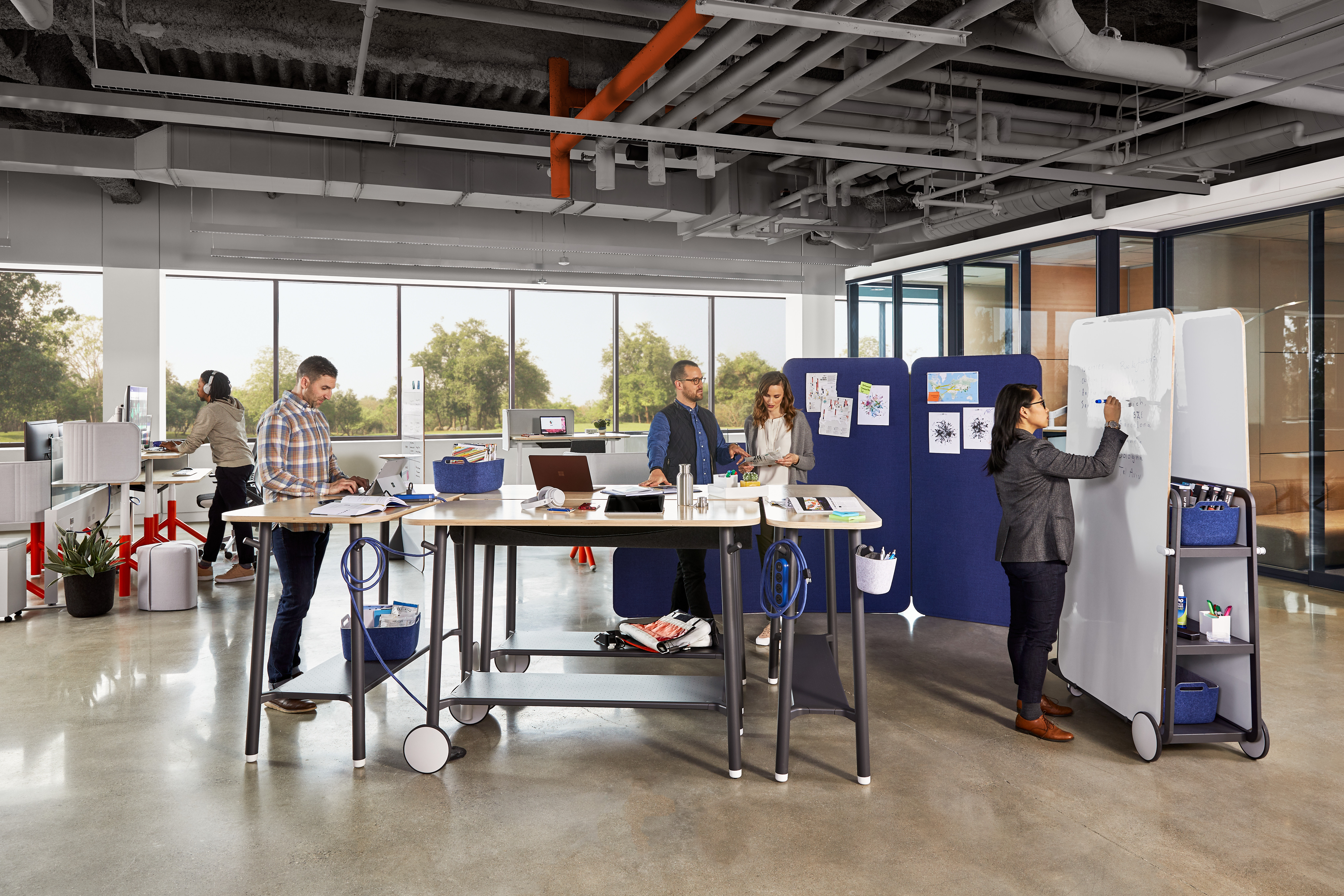
Physically engage with their content, change postures, move materials, and gain new perspectives.
Teams need a variety of displays in both digital and physical media. They need tables, carts, and flexibility in the space to allow them to adjust as their project needs change.
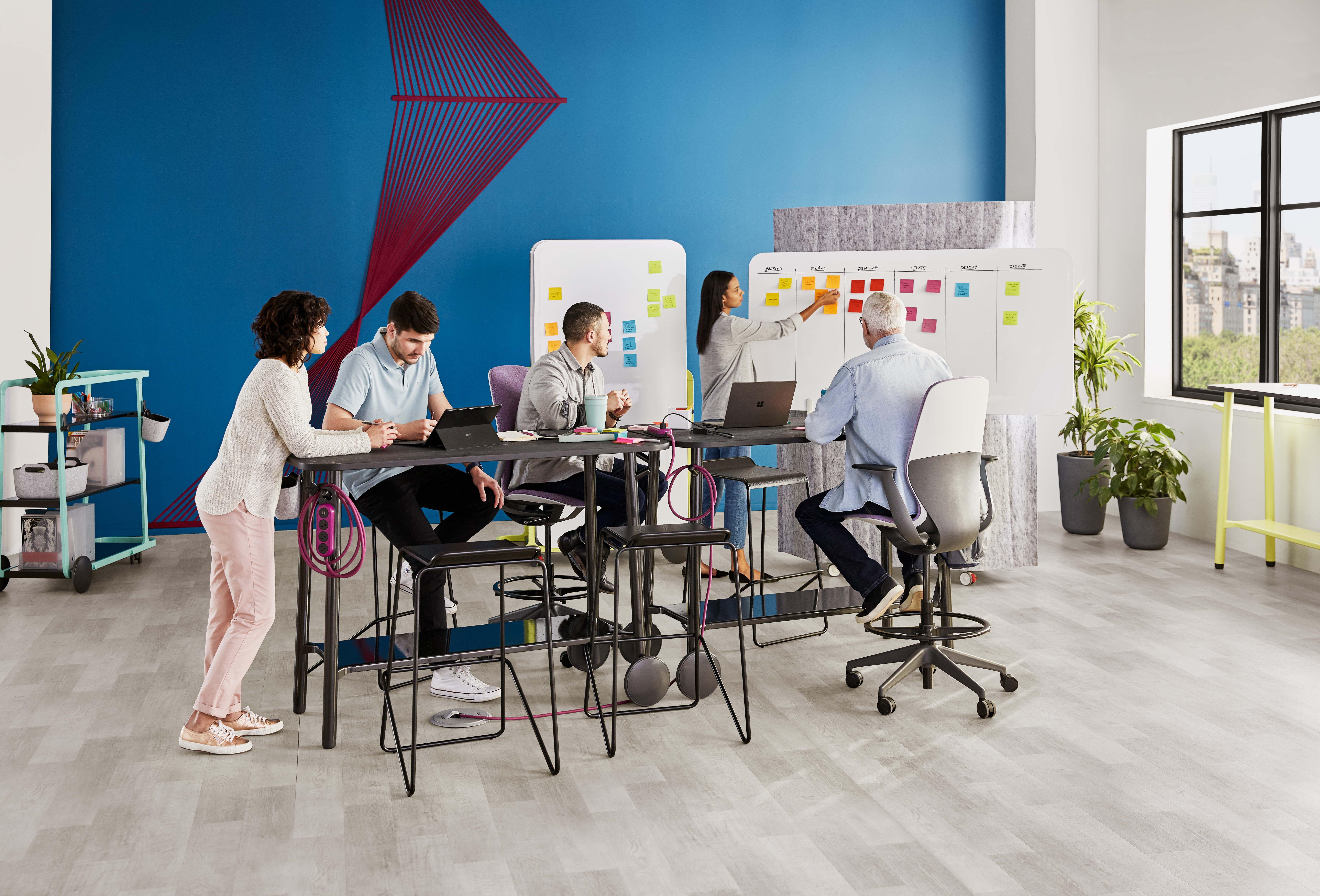
Quickly toggle between digital and analog tools for thinking, creation, and collaboration.
Everything needs to be at their fingertips. To complete their projects successfully and efficiently, agile teams need all their resources readily available. High-performing spaces are necessary for high-performing teams.
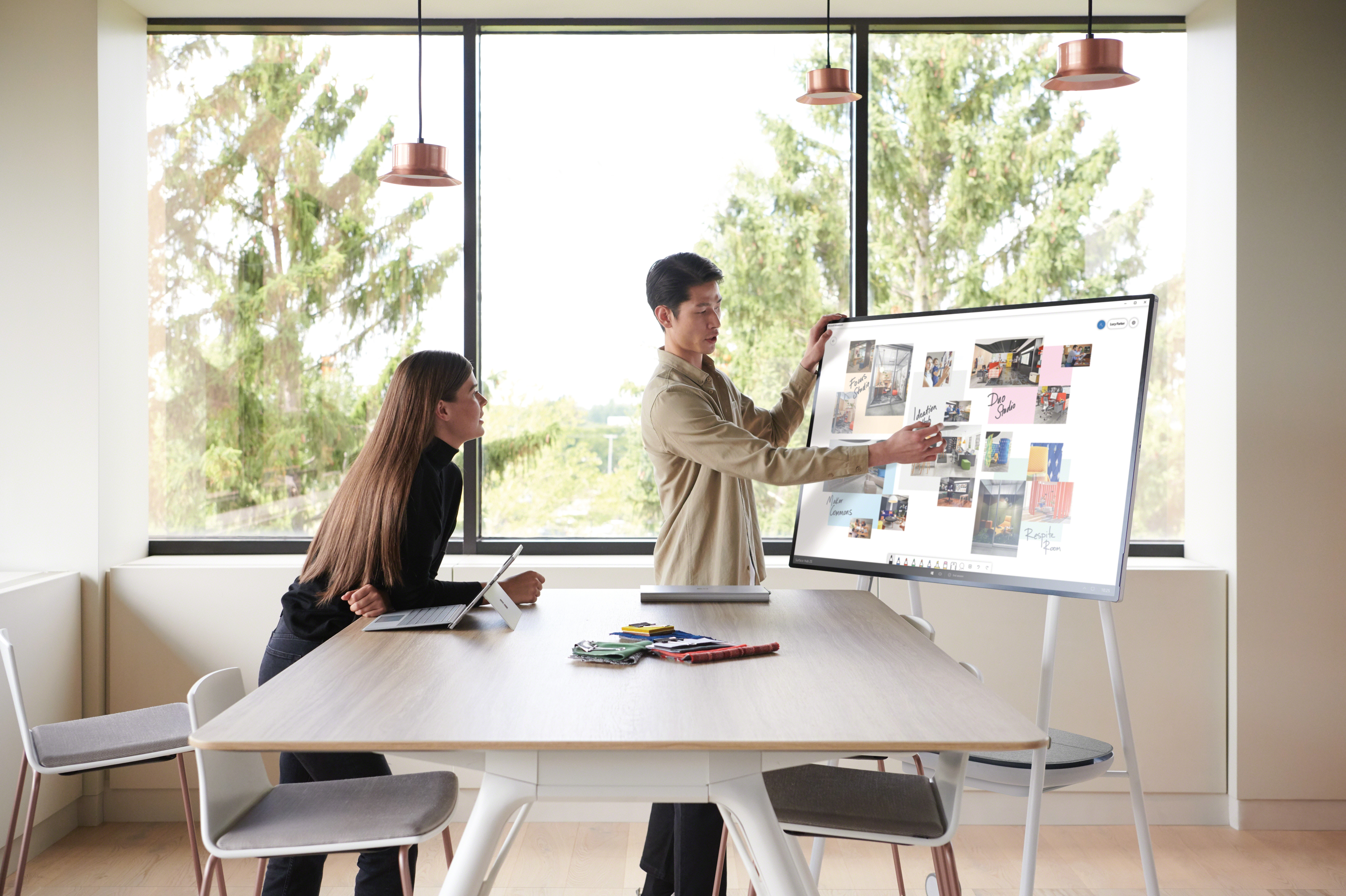
New Work. New Rules.
Leaders need to recognize the changing needs of their modern teams. These agile teams are modern tribes – they support each other in the work they do, and they need the tools to successfully share their wisdom with each other. The needs of work teams are changing, and the spaces they do work need to change with them.
If you’d like to learn about the future of shared spaces, read more from Steelcase. If you need help adapting your office space to the changing needs of your teams, contact us at iop@i-o-p.com or 605-339-0300.
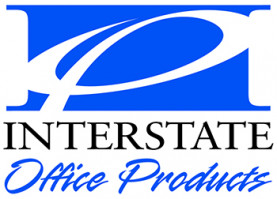
Chadd Dunn
Great post James! While Agile and Design Thinking are currently the prevailing work trends, the design principles applied also transcend into a Post-COVID workplace. Companies want to invest in solutions that can adjust quickly and easily whatever the next pandemic or crisis. The fixed paradigm of planning offices is a way of the past for so many reasons and I like how you acknowledge the need for physical, territorial, and acoustical privacy which is needed for heads down focused work. A more fluid planning approach allows the flexibility to achieve both team and individual work.